5 Star Luxurious Bhutan Cultural Tour For Special Needs

For the first time in Bhutan Tourism, a team of Bhutan Swallowtail has designed a most luxurious Bhutan tour for specially-abled ardent travellers who wish to visit Bhutan - the Himalayan Kingdom of Bhutan.
What to expect:
This tour is especially designed for specially-abled (movement impaired) ardent travelers who wish to explore the Himalayan kingdom in the clouds. Bhutan is most popular for maintaining its age-old culture and traditions, environment and nature. The whole of Bhutan has often been described as a ‘vibrant living museum’ and a cultural extravaganza for the tourists.
Your stay will be at the highly recommended Hotels in Bhutan that provides excellent luxuries in incredible locations and world-class services.
Package Inclusion:
- 1:1 English speaking helpers throughout the tour
- English Speaking Tour Leader Guide throughout the tour
- Stay in hotels – Luxury 4 & 5 star hotels
- All three meals, tea and coffee
- Transportation
- Packed lunches and snacks wherever required
- Monumental Fees
- Bhutan Tourism Development Fee
- Government Royalty of USD 65 per person per night – your personal contribution free health, education to the people and all developmental works in Bhutan
- VISA processing Fee
- Airport Transfers
- Local sim card – on request only
Package Does Not Include:
- International/Domestic Air fare
- Refreshments and bottled drinks and alcohol
- Tips/gratuities
- Cost arising out of Flight Cancellation/road blockades/ landslides and events beyond our control
- Expenses of personal nature and any other expenses not mentioned in the above cost
Hotels/Accommodation and Room Type:
Night 1 - Paro - Zhiwaling Hotel - Junior Suite
Night 2 - Thimphu - Le Meridian - Classic
Night 3 - Thimphu - Le Meridian - Classic
Night 4 - Gangtey - Gangtey Lodge - Farm Suites
Night 5 - Gangtey - Gangtey Lodge - Farm Suites
Night 6 - Punakha - Uma by Como - Valley View
Night 7 - Paro - Uma by Como - Valley View
Night 8 - Paro - Uma by Como - Valley View
Value Addition:
- Included quality wining and dining: a welcome reception with drinks at every hotels of your stay,
- One to one helper to ensure safety, comfort and assistance wherever required
- Baggage handling everywhere on your tour.
- Free Wi-fi and Internet in most of the hotel rooms and lobbies.
Transport Facilities:
The vehicles of Bhutan Swallowtail are all luxurious and air conditioned, catering to the comforts of our guests as well as ensuring a smooth ride over the mountainous and winding roads of Bhutan. With high ride quality and extended legroom you can enjoy the beautiful landscape from the inside of our cars. We have Toyota SUVs, Hi Ace buses and coaster buses with carrying capacity of up to 30 people in one bus. Driven by experienced and licensed drivers we will make sure you enjoy your holiday to Bhutan and the comforts of our luxurious fleet of cars.
VISA to Bhutan
All tourists must obtain a visa clearance prior to travel to Bhutan. Visas are processed through an online system by us as your licensed Bhutanese tour operator.
You are required to send the photo-page of your passport and your visa will be processed by the Tourism Council of Bhutan (TCB) once the full payment of your holiday (including a USD $40 visa fee) has been wire transferred and received in the TCB bank account. Once received the visa clearance will be processed within 72 working hours.
At your point of entry you will be required to show your visa clearance letter, the visa will then be stamped into your passport.
Terms and Conditions:
Tour prices and dates are correct at the time of the website going live, however are subject to confirmation at the time of booking. All tour information is correct at time of tours going live, however is subject to change, please confirm all details at time of booking. For full terms and conditions, please refer to our Booking Conditions page.
Gallery
Itinerary
Day 1: Paro Valley: Welcome to Bhutan- Land of the Peaceful Thunder Dragon
Your first glimpse of Bhutan, Sight Seeing in ParoOn your arrival at the Paro International Airport, you will be warmly welcomed by your tour guide (a trained personnel) and driver. They will give you a brief introduction about Bhutan in general, do’s and dont’s and interesting tid bits on Bhutan.
Check into your hotel, rest and relax for a while, and you can have a traditional Bhutanese lunch at your hotel or in a local (tourist standard) restaurant in town. Rice forms the staple food of the Bhutanese cuisine and spiciness is the most distinctive characteristic of the Bhutanese food. Chilies are added in each and every dish and most Bhutanese people do not enjoy their meals if it is not spicy. However spice here means only the chilies and not the condiments. But you can order your food according to your tolerance to spiciness. You can also enjoy our local wine- Ara which is made from either rice, millet, maize or wheat.
In the evening you can drive to the View Point from where you can enjoy the view of the Paro valley with the well lit Paro Dzong, Museum and the Cantilever Bridge.
Overnight at your luxury hotel in Paro
Day 2: Paro to Thimphu Valley – The Capital City of Bhutan
Visit in Thimphu - the Capital of BhutanAfter breakfast you can visit the Kyichu Lhakhang, which is one of the 108 temples built by King Songtsen Gyempo in 659 A.D. It is one of the oldest and very sacred temples and being one of the most sacred places in Bhutan, it also stands as a major pilgrimage site for the Bhutanese. You will see never ending pilgrims circumambulating the temple. Fragrance of incense pervades the temple and the architectural structure is very different from other temples.
Drive for an hour to Thimphu the capital of Bhutan. En route, you will have a glimpse of the 15th Century Tachogang Lhakhang/Temple built by the great master architect, iron bridge builder and Yogi Thangthong Gyalpo. He had built many iron bridges all over Bhutan including the one leading up-to this temple.
You will be driving south along the Paro River to the confluence at Chuzom where it meets the Thimphu River. From then on the drive is along scattered settlements along the highway, paddy fields and fresh fruit stalls. Do not hesitate to stop and buy some local fresh organic fruits.
In Thimphu, check into your hotel, have your lunch there or in a restaurant in town. There are many restaurants serving all range of International, Continental, Indian, Chinese and Bhutanese cuisine.
The beautiful Memorial Chorten/stupa in town is another favorite with the tourists and a regular sight for congregation of devout Buddhists circumambulating the Chorten from dawn till dusk. The main statue of the Buddha inside the Chorten is said to grant wishes for the earnest and honest hearted! This is also a favorite spot for elderly people and you can observe them as they spend their time talking to each other, chanting prayers and going round the Stupa.
Visit the Changangkha Lhakhang, the oldest temple in Thimphu. Children born in Thimphu are usually brought to this Temple to receive their first blessings and name. You can also ask the resident astrologer or monk to consult the Divination Charts and select the most appropriate prayer flags as per your birth date. Accordingly your guide will buy the prayer flag and with the help of your guide and driver you can hoist the flag at a mountaintop anywhere in the next coming few days.
Visit the Craft Bazaar, a single line of shops selling traditional arts and handicraft items, not necessary to buy but just learn about Bhutanese handicrafts.
Overnight at your luxury hotel in Thimphu.
Day 3: Thimphu Valley Excursion – Combination of the Ancient and the Modern
Sight Seeing in Thimphu - the Capital of BhutanThimphu with a population of about 130,000 people is one of the last few capital cities without traffic lights and the traffic still managed by traffic policemen. While strictly maintaining the aesthetic beauty and traditional style of architecture in the modern buildings, there are also very old temples and numerous monasteries in and around the city, a few discotheques, Karaoke joints and pubs.
A visit to the DRAKTSHO Vocational Training Center for Special Children and Youth will give an insight into the high acceptance by the Bhutanese people towards the differently abled special people. DRAKTSHO was founded by a mother of a boy with learning disability in 2001 and it was registered as a Public Benefit Organization under the Civil Society Organization in 2010. The Center empowers special people with special needs by giving various trainings and vocational skills for a better future.
Soak in the panoramic view of the Thimphu valley from the site of the gigantic Lord Buddha, a 51-meter bronze Shakyamuni Buddha statue gilded in gold. You can also go through a rough trail leading to a spot with great views of the Thimphu valley and the Big Buddha in the distance. You can have your picnic lunch overlooking the valley.
After lunch visit the Bhutan Postal Museum where you can make your own personalized stamps with your photo and use them to send postcards to your family and friends around the world.
If you want to mingle with the Bhutanese people and jostle with local farmers amongst the aroma of organic fruits and vegetables, the Centenary Farmers Market is the place to be. Smiling tourists watch in awe as locals bargain with the vendors and you could even stock up on your organic fruits for the coming days.
In the evening visit the Tashichho Dzong/Fortress of the Auspicious Religion and office of the Golden throne of the Dragon King of Bhutan. There is a viewpoint above the Dzong from where you can also enjoy the view of the Dzong against the vast paddy fields.
Overnight at your luxury hotel in Thimphu.
Day 4: Thimphu – Punakha – Wangdue – Gangtey & Phobjika Valleys
Most Beautiful Glacial Valley of BhutanAfter breakfast check out of your hotel and drive for about three hours to Wangdue and Punakha valleys and another 2 hours to reach Gangtey and Phobjika valleys.
Enroute stop over at the Dochulaa Pass (3150 meters) and on a clear day enjoy spectacular views of the snow-capped Himalayan Mountains. The 108 small stupas built over a small hill is also a beautiful sight. The road from the Pass winds down to the warm and fertile valleys of Punakha and Wangdue.
A visit to the Fertility Temple / Chime Lhakhang is a must to receive blessings from the Divine Madman. Standing on a picturesque hilltop the Lhakhang is famous for its fertility wish grants to couples. Inside the walls of the Lhakhang are beautiful frescoes depicting the colorful life of Lama Drukpa Kuenley, the Divine Madman regarded for his crazy methods of teaching that included blessing women in the form of copulation!
After lunch, continue drive for 2 hours till you reach the beautiful glacial valleys of Gangtey and Phobjika. Located at an altitude above 3,000 meters these valleys are the winter roosting grounds for the sacred and endangered Black Necked Cranes. The Black Necked Cranes mate for life and are exemplary examples of loyalty and fidelity. The Cranes live in these valleys from November till March and fly to Tibet for the summer.
Check into your hotel, rest and relax. In the evening your guide will take you around the village and enjoy your dinner with a local family at a homestay.
Overnight at your hotel in Gangtey.
Day 5: Excursion of Gangtey, Phobjika and neighboring villages
Sight Seeing in Glacial ValleysStart your day by first visiting the Gangtey Goemba / Monastery overlooking the valleys and visit the temples inside.
There are not many touristy places or sights to visit and these villages being remote and not much visited by tourists enjoy a very peaceful and rural atmosphere. So today your guide will take you to strategic locations from where you can enjoy the view and enjoy a picnic lunch.
Since the valley is wide, with the help of your guide you can enjoy the gentle nature trail that starts from the Gangtey Monastery, down the hill and ending at the valley bed.
Additionally you can also visit few traditional houses, watch the villagers/farmers as they go about their daily lives and interact with them.
You can also watch the Black Necked Cranes as they play around or if you are lucky even watch a dance. Gangtey and Phobjika valleys are the winter roosting grounds for the sacred and endangered Black Necked Cranes, and they live here between the months of November – March, and they fly to Tibet in the summer. At the annual Black Necked Crane Festival (11th November) and during the Gangtey Tshechu/Festival (23-24 September 2018) the communities and children showcase the Cranes dance with choreographed moves and steps copied from the their dance.
You can either have your dinner at the hotel or try out some other farmstay for dinner with a local family.
Overnight at your hotel in Gangtey.
Day 6: Punakha Valley Excursion – The Old Capital of Bhutan
After breakfast drive back to Punakha for 2 hours and enjoy the warm balmy weather of Punakha and Wangdue. However you will be just driving through Wangdue and spending more time in Punakha valley.
The most iconic place in Punakha is the impressive Punakha Dzong / Fortress of Great Bliss built in 1673 by Zhabdrung Ngawang Namgyel (the first spiritual & political leader of Bhutan) to commemorate the final victory against numerous Tibetan invasions. Located on a piece of land between two rivers Pho Chhu and Mo Chhu (literally meaning male and female rivers), the Dzong is massive, huge and magnificent in all its architectural grandeur. Although ravaged by flood, fire and earthquakes many times, the Dzong was always rebuilt with its original pattern and design. The first King of modern Bhutan was crowned in Punakha Dzong. Important religious ceremonies are still held in the Dzong. The Royal Wedding ceremony on 13th October 2011 of the Fifth King Jigme Khesar Namgyel Wangchuck to Jetsun Pema was conducted in Punakha Dzong.
You can enjoy a drive along banks of the female river first, and then the male river. The drive is beautiful through the paddy fields, fruit trees, flowers and village houses.
Drive back and overnight at your luxury hotel in Punakha.
Day 7: Punakha - Thimphu – Paro
After breakfast visit the Sangchhen Dorji Lhuendrup Nunnery where you can interact with the nuns, most of them speak English, and watch them as they go about their daily life and routine. You can also enjoy the view of both Wangdue and Punakha valleys from here.
Drive a little further up and visit the Talo & Nobgang villages, which is the ancestral village of the Royal Queen Mothers.
Then drive back to Paro (via Thimphu) for about 3.5 hours along the same way you drove before. Enroute you will have a glimpse of the Semtokha Dzong / Fortress Atop a Demon on the outskirts of Thimphu valley. Semtokha Dzong was the first Dzong built in 1629 and as the name suggest is built on top of a demoness that was creating havoc to the people of Thimphu valley back then.
In Paro you can visit the Dungtse Lhakhang located in the town. It is a three storied temple built by Thangtong Gyelpo, the iron bridge builder to subdue the demoness who was causing destruction to the inhabitants. The temple is said to be built on the head of the demoness and one of the oldest temples/stupas in Paro valley. It has the sacred Kagyu lineage arts and the paintings highlights the stages of Tantric Buddhist philosophy.
In town you can visit the numerous small handicraft and souvenir shops. There is also a vegetable market that you can visit that sells organic fruits and vegetables although it is not as big as the Thimphu Centenary Farmers Market.
Overight at your luxury hotel in Paro.
Day 8: Paro Valley - Picnic by the riverside with cultural programmes and activities
You will drive up to the base of the Taktsang Monastery or the Tiger’s Nest and from the base enjoy the view of the magically hung Taktsang Monastery. Legend has it that the monastery is anchored to the cliff by the hairs of the khandoms (female celestial beings). It is said that Guru Rinpoche flew on a female tigress in pursuit of a demon, which he subdued at the current site of the Monastery. Taktsang is one of the holiest site in the Buddhist arena and the most important cultural icon in Bhutan.
Guru supposedly concealed various forms of Dharma treasures including 3 teachings of Yoga to be discovered later by his disciples called Tertons (Treasure Discoverers). Over the centuries many great, pious and renowned Lamas/Monks/Yogis meditated in the caves nearby the main Taktsang temple.
A Picnic by the riverside will be a treat as you enjoy your last day in Bhutan. The picnic spot is about 30 minutes drive away towards the mountains and amid the scattered village houses in a scenic place with beautiful view of the river. Your guide and driver will bring packed lunch (food of your choice) and you can enjoy the warm afternoon sun, peace and nature.
In the evening drive to Taktsang Boutique Resort & Spa, and if you want, you can experience Bhutanese cooking with our local chef at Taktang Resort. You can either learn some Bhutanese cooking or cook your own meal with local ingredients. The ingredients are organic and local which we usually grow in our backyard.
At the Resort you can enjoy a Traditional Hot Stone Bath - White round stones picked up from the riversides are roasted in fire until red hot and then immersed in a wooden tub of fresh spring water sprinkled with herbs. These hot stones baths are supposed to be very curative with numerous medicinal and healing properties and has been the practice since the ancient times in Bhutan.
Also enjoy a cultural programme organized especially for you at the Resort. A professional troupe of 10 – 12 men and women will perform masked dances and traditional folk dances just like in the Festivals and we are definite you will enjoy this cultural experience.
After dinner, drive back to your hotel and overnight in Paro.



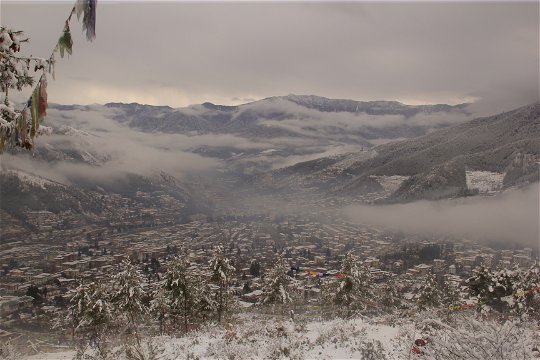
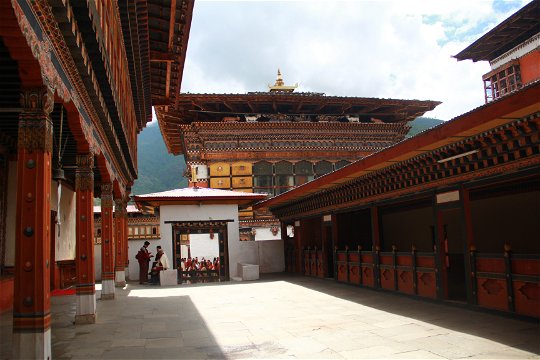
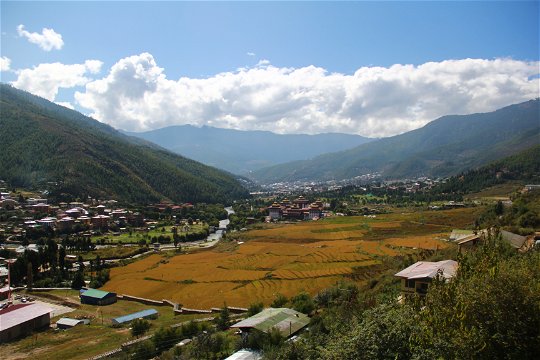
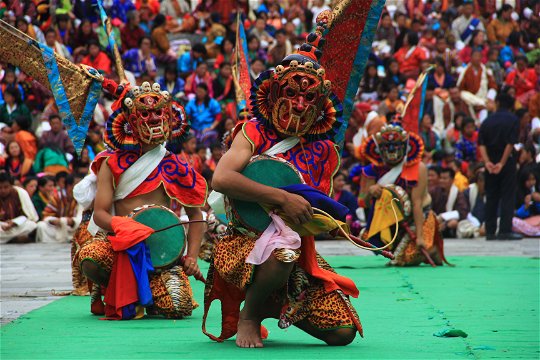

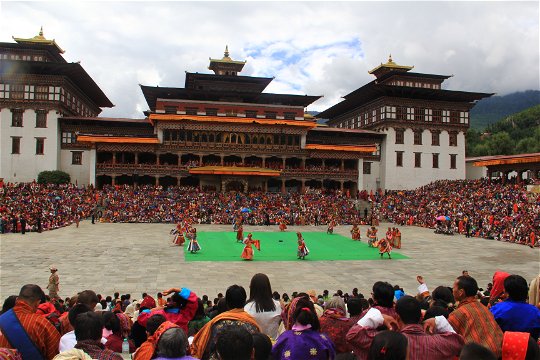

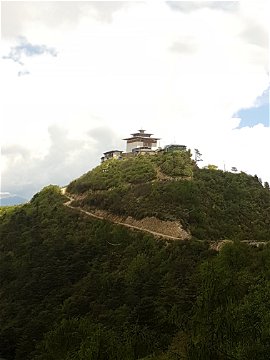
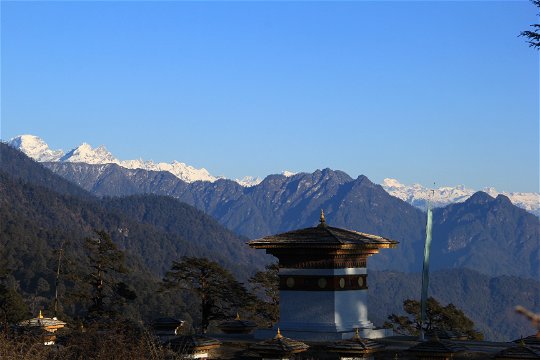
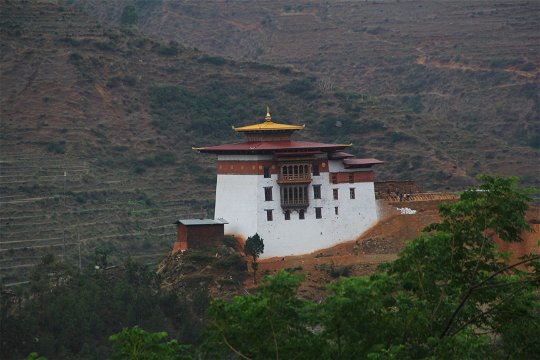
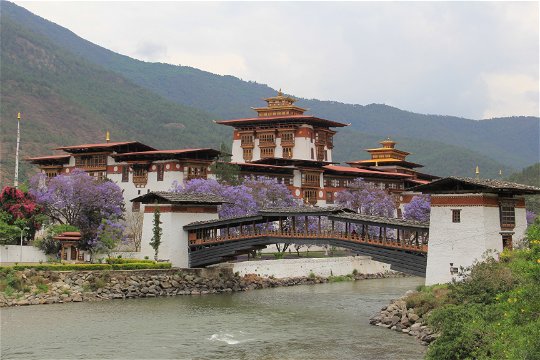

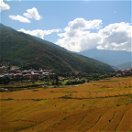
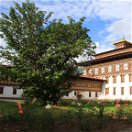
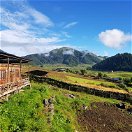
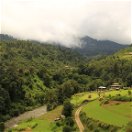

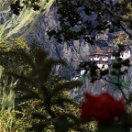
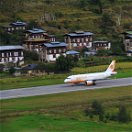


Share This Page